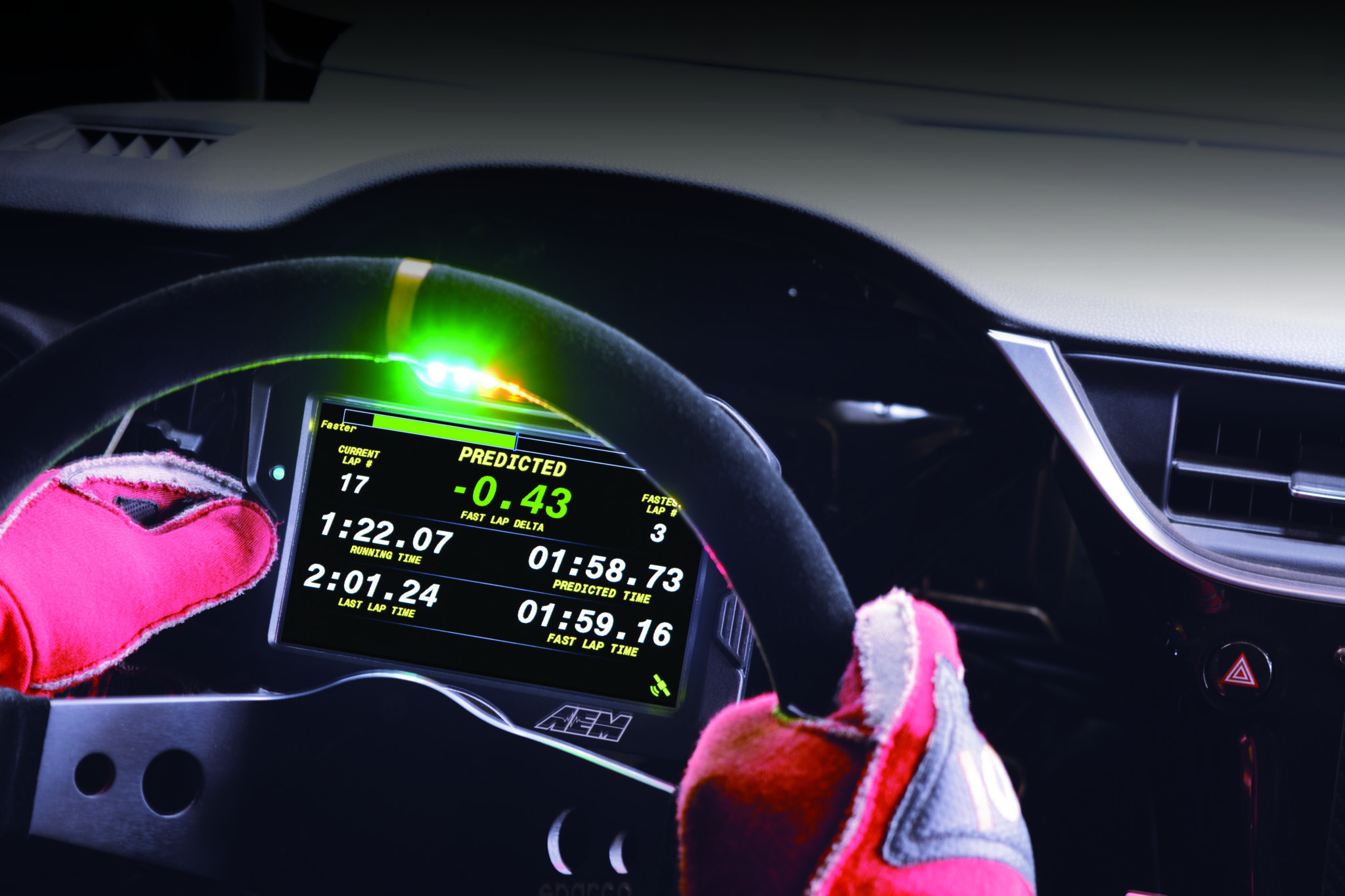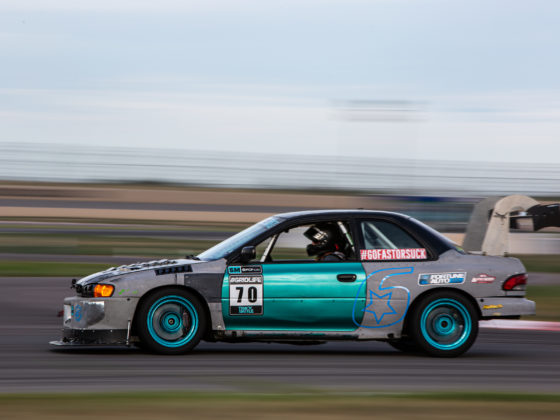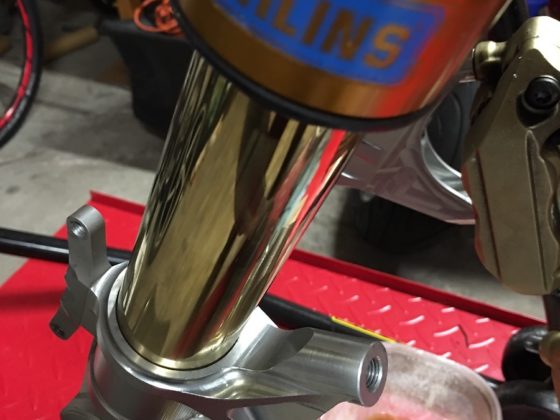
Racepak offers a dashlogger that packs the punch without the need for pretty colors, making the IQ3 Logger Dash one of the simplest yet plenty capable options for most racers. Similar to the competition, it features an internal accelerometer, programmable shift and warning lights, and multiple pages to customize (up to 4). It logs up to 32 channels and stores the data onto a micro SD memory card, which means the data capacity is up to you. The IQ3 records data at up to 100 samples per second, still plenty for a majority of users. Racepak also keeps things simple with complete Vnet sensor capabilties, which a majority of Racepak products use in order to keep hardware easily plug-and-play. Users can review the data on Racepak’s own DatalinkII Data Analysis Software. For users looking for simplicity and plug-and-play, it doesn’t get much easier than this. MSRP starts at $1,892.95.
Stack Colour LCD Competition Dash Logger

Stack is another longtime player that’s introduced a powerful, color dashlogger to the market with the Stack Colour LCD Competition Dash Logger. This piece of hardware fits a 7-inch LCD panel display within an IP65-sealed carbon composite housing to maximize functionality but with little sacrifice to keeping things lightweight. This dashlogger accommodates two programmable data bus channels (one CAN and one serial) in conjunction with analog sensors and its integrated accelerometer. Stack’s logger gathers data at up to 1,000 Hz through up to 128 channels, onto 4 GB of solid-state internal memory. It offers loads of customization options for configurable inputs and allows for extra functionality with dedicated control switches and configurable input/output options. With the help of configurable template pages (up to 20), LED lights, 0-5V controls, and more, you’ll find little restriction in making this logger do everything you need. Stack also offers its own DataPro Analysis software to help users make the most of the hardware. MSRP starts at $2,599.95.
With the appropriate data logger for your car picked out, what are you supposed to do with it? Data analysis software is intimidating for many, but using it to pick apart your driving technique is easier than you’d think. Check out the next segment on data analysis, where you can learn how to read those lines and scribbles to turn up your driving skill.




5 comments
I’m very interested in the Fueltech FT series Dash/datalogger/ECUs, I like the idea of an all-in-one system both for the simplicity and for the ease of installation/debugging/tuning. The only thing holding me back is support, its a Brazilian company with little representation or support outside south america. If AiM offered a similar product I would buy it in a heartbeat.
The secret to being a great driver has much more to do with understanding slip angles. When you understand how tires work to produce maximum grip, then you can start improving your laptimes.
The key, is understanding what ‘being on the limit’ really means. First, you must know what the best temps are for your tire. Make sure that temp is evenly distributed across all tires, and then you must drive in a way to keep the tires at those temps without exceeding high/low limits.
After that, you must understand that tires produce maximum traction dependent on the normal force (weight+downforce), ideally you want maximum downforce, at all speeds, and to distribute weight to minimize CoG, and polar moments (of course, it depends on FWD, RWD, AWD.)
Considering all those factors together, you also need to have the courage to drive all tires at the edge of the traction circle, determined by slip angle. That’s why Anti-Ackerman works for race tires, and also very slight drift angles (the rear tires need slip angles 3-5 degrees to generate maximum cornering force.)
In summation, you need to understand all these concepts intuitively (like Senna) AND you must be willing to drive at those limits. It’s very rare that somebody can put all those elements together, but when they do, the driver’s ability becomes far greater than the sum of the parts.
Dont forget https://www.autosportlabs.com/
RACECAR DEVELOPMENT NOTES
The list below should read as a development schedule. So, it starts with the basic stuff, and gets more advanced. I do believe that you must first build a solid chassis before you start on Engine/Horsepower modifications, so that’s how the list is arranged.
Driver Essentials (Before Vehicle Modification)
Read as much as possible on driving and vehicle development before modifying your vehicle.
Develop goals/targets for vehicle depending on street, track, or full race goals.
Steering Wheel (Leather, Aftermarket Race Wheel, etc.)
Race Pedals (Optimize for heel/toe shifting.)
Driving Gloves/Shoes/Sunglasses (Improved feel and performance while driving.)
Race Seat/Race Harness (Depending on street vs. track vs. full race)
Blacked Out Dash/Felt/Flocking (To reduce glare.)
Aftermarket Instrumentation (Tachometer, Oil Pressure Gauge, Water Temp Gauge, Boost Gauge, OBD2 ELM App (DashCommand, etc.))
CHASSIS/SUSPENSION DEVELOPMENT ORDER
1. Chassis Geometry (Street Car vs. Track Car)
(Obviously, you can’t change all of these variables, so they should be considered before you purchase a particular vehicle platform.)
Track (Wide track for maximum cornering grip vs. Narrow track for lower aero drag to maximize top speed.)
Wheelbase (High speed racing (HPDE & Drag Racing) vs. Low speed racing (AutoX))
Ride Height (Necessary wheel travel dependent on road surface variation.)
Suspension Type (Optimization of MacPherson vs. Double Wishbone vs. Multilink)
2. Mass Optimization (Reduction, Relocation, CoG & Polar Moment)
Unnecessary Part Deletion, Hole Drilling, Mass Relocation (Battery, Ancillary parts)
CoG & Polar Moment Optimization (Moving mass closer to the ground plane and reducing/increasing polar moment depending on racing category. (Reduce polar moment on AutoX, Time Attack, but increase on Drift.))
Part Material Replacement (Lexan Windows, Aluminum, Titanium, Carbon, etc.)
3. Chassis Stiffness (Dependent on Tire Grip/Spring Rates)
Bushings vs. Spherical Bearings (Street vs. Track)
Strut Tower Bars (Strut bars should be light and stiff, and doubled bolted to handle bending/moment loads.)
Custom Structural Bracing (Triangulation between frame members.)
4. Spring Rates (Dependent on Street vs. Race Tire)
Spring Rates Depends on FWD, AWD, RWD
Corner Weighting (Balance Optimization)
Air Springs (Non-Linear spring rate needs specific damper tuning)
Progressive Coils or Tender Springs (Dependent on street vs. track surfaces.)
Spring Preload Optimization (Street vs. Track)
5. Dampers
Twintube vs. Monotube (Monotubes are better for low travel suspensions considering higher volume fluid displacment for given displacement.)
Fixed vs. Adjustable (Street vs. Track Car)
Electrically Controlled/Dynamic Damping (Ideal for street cars that see various road surfaces.)
6. Tires & Wheels & Alignment
Street Rubber (Grip vs. All-Weather Performance)
Race Slicks (Heat Cycling, Tire Stretch, )
Race Wheels (Forged vs. Spin Casting, Offset, Width)
Street Wheels (Lightweight vs. Durability)
Slip Angle Optimization (Sidewall Compliance vs. Ultimate Grip & Steering Response)
Tire Temperature Optimization (Possibly necessitating staggered tire sizes.)
Camber (Dependent on Suspension Type)
Toe (Toe-in for vehicle stability, Toe-out for rotation)
7. Braking System
Upgraded Pads (Street vs. Track)
Upgraded Rotors (Premium Damped Iron, Electroplated, etc.)
Brake Master Cylinder Brace
Aftermarket Stainless Steel Brake Lines
Aftermarket Calipers (Dual Caliper Sliding Piston, Fixed Caliper 4-Piston, etc.)
High Temp DOT5 Racing Brake Fluid
Aftermarket Two-Piece Floating Rotors (Slotted, Crossdrilled, Carbon, Carbon-Ceramic, etc.)
Aftermarket Race Pads (High Temp. Pads for aftermarket rotors.)
8. Aerodynamics
Stock Sheet Metal Optimization (Front first/Rear last due to boundary layer separation: Hood Vents, Plugging Unnecessary Bumper Openings, Reducing Panel Gaps, Fender Cutouts, etc.)
Front Airdam/Splitter (Street vs. Track)
Custom Wheel Strakes/Air Curtains (To reduce airflow into wheel well.)
Aftermarket Body Kit (Widebody, Aero Optimized, etc.)
Aftermarket Rear Wing
Aftermarket/Custom Front and/or Rear Diffuser
Aftermarket Vortex Generators
ENGINE/TRANSMISSION/DIFFERENTIAL DEVELOPMENT ORDER
(This list is highly dependent on NA, Turbo/SC)
1. Engine (Essential Maintenance)
Cam Belts, Water Pump, Engine Bearings, Valve Lash Adjustment, etc.
2. Oil System
Premium Synthetic Oil & Filter
Cerratech, LubroMoly Oil Additives
Oil Plug Magnet + Neodymium Magnets (On oil filter.)
Oil Canister Hose Clamps (To reduce canister wall flex under high oil pressure.)
3. Thermal Management
Coolant Flush/Replacement
Coolant Additives (Water Wetter)
4. Engine Mounts
Hard Rubber (Street), Polyurethane (Track), Aluminum (Extreme Race)
5. Exhaust System
Aftermarket /Custom Catback Exhaust (Mild Steel vs. SS vs. Ti)
Headers (4-2-1 vs. 4-1, Exhaust Wrap)
Race Pipe and/or Race Catalytic Converter
6. Intake System
Flat Panel Type vs. Cone Air Filter (Street vs. Track)
Aftermarket Intake System (Short Ram (+HP) vs. Cold Air (+TQ))
Race Pipe and/or Race Catalytic Converter
Intake Manifold Spacer (To reduce heat xfer from the head to the manifold
7. Fuel System
Fuel Pump Rewire (To maximize voltage at pump.)
Fuel Pump Upgrade (Dependent on NA or Turbo/Supercharged
Fuel Rail (Turbo/SC)
Full Fuel System Replumbing (Turbo/SC)
8. ECU Tuning
ECU Reflash/Chipped
Aftermarket ECU (Necessitating Engine Dyno testing)
9. Transmission / Differential (HP Dependent)
Upgraded Shifter (Poly/Bronze Bushings, Short Shift vs. Long Shift (Street vs. Track))
Synthetic Transmission/Differential Fluid
Aftermarket Clutch (Street vs. Track, HP Dependent)
Aftermarket Flywheel (Street vs. Track)
Transmission/Differential Cooler
10. Engine Internals
Aftermarket Oil Pump / Oil Pan
Windage Tray / Improved Oil Scavenging / Full Race Dry Sump
Aftermarket Rod Bolts/Rods
Aftermarket Pistons/Pin/Rings
Aftermarket Camshafts/Springs/Retainers
Aftermarket Valves/Valve Guides
Race Porting/Polishing
Engine Blueprinting/Deburring/Balancing
Aftermarket Engine Sleeves/Crankshaft
11. Transmission/Driveline (Advanced Modifications)
Optimized Gearing (High Speed vs. Torque)
Aftermarket Differential (Viscous, Clutch, Torsen)
Aftermarket Driveshaft (Aluminum, Carbon)
Race Type Transmission (Sequential Shift, etc.)
I can’t seem to find the data analysis article, maybe I’m not looking in the right place though.